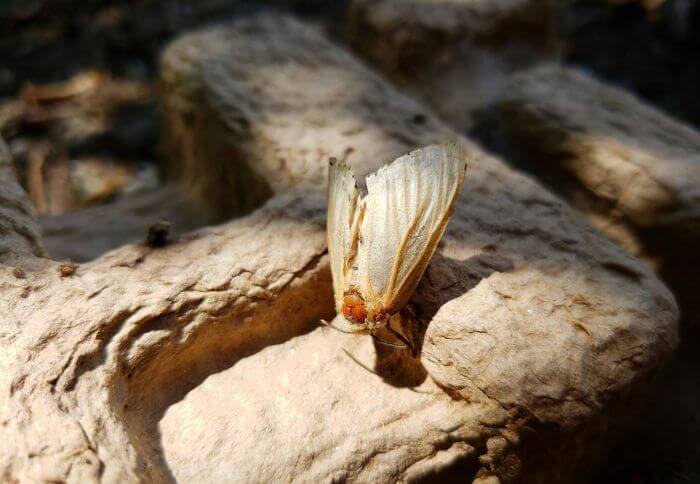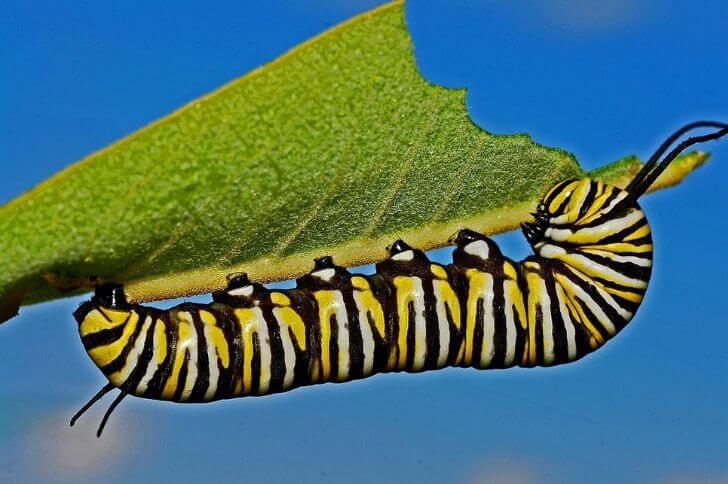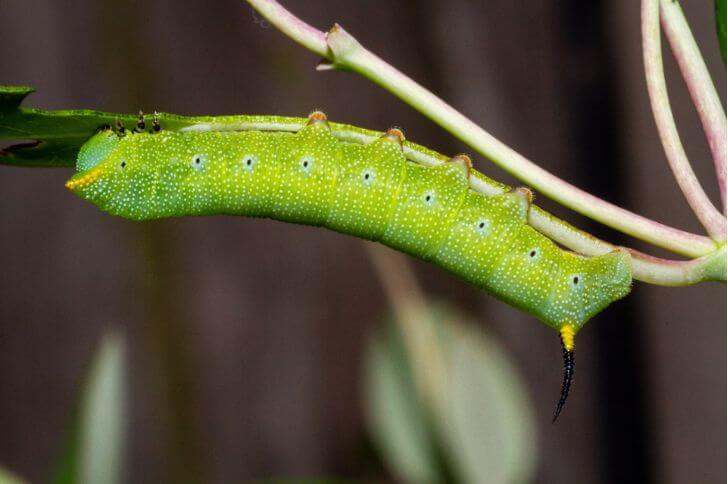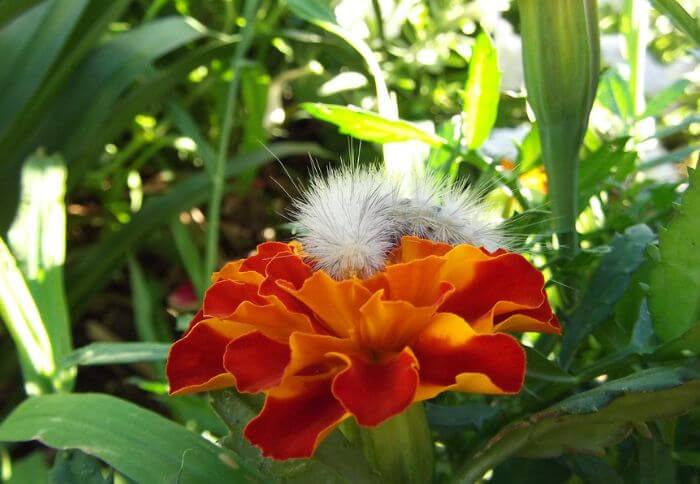5 Green Caterpillars with Black Heads
Caterpillars, those fascinating creatures that transform into beautiful butterflies or moths, come in a wide array of colors and patterns. Among these enchanting insects, there is one particular type that stands out – the green caterpillar with a black head.
Its vibrant green body and contrasting dark head give it a distinctive appearance, making it easily recognizable in nature. But what makes this caterpillar so unique?
In this article, we will explore the different types of green caterpillars with black heads, delving into their characteristics and ecological significance. So let us embark on a journey to uncover the secrets behind these captivating creatures of nature.
List of Green Caterpillars with Black Heads
1. Long-Tailed Skipper Caterpillar
The Long-Tailed Skipper Caterpillar is a true marvel of nature, captivating the eyes of any observer. With its vibrant green body and contrasting black head, it stands out in the world of caterpillars.
But what makes this creature truly fascinating is its unique long-tailed appendages that protrude from its rear end, giving it an unusual appearance.
These long tails serve a purpose beyond mere aesthetics. They are actually scent organs called osmeteria that emit a pungent odor when threatened.
These odors act as a defense mechanism against predators, deterring them from making the caterpillar their next meal. It’s amazing to think that such a small and seemingly vulnerable creature can protect itself so effectively in its environment.
Another interesting fact about the Long-Tailed Skipper Caterpillar is its feeding habits. This caterpillar has a rather specialized diet consisting mainly of legumes such as beans and peas.
Its preference for these plants might be linked to their high protein content, which provides essential nutrients for growth and development. This dietary specialization highlights the incredible adaptability and ingenuity found in nature.
2. European Puss Moth Caterpillar
The European Puss Moth Caterpillar may not be the most well-known caterpillar, but it definitely deserves attention. With its vibrant green body and striking black head, this little creature is a sight to behold. But don’t let its cute appearance fool you; the puss moth caterpillar is armed with some impressive defenses.
One of the most fascinating aspects of this caterpillar is its ability to mimic other dangerous insects in order to ward off predators.
When threatened, it can retract its head into its body and extend two elongated structures called pseudospikes that resemble stingers. This clever disguise gives the impression that the caterpillar is more dangerous than it actually is, causing potential enemies to think twice before attacking.
But aside from its deceptive tactics, the puss moth caterpillar has another interesting trick up its sleeve. It has a gland on each side of its body that secretes foul-smelling liquid when disturbed or handled roughly.
This secretion not only deters predators but also serves as a warning signal to other animals in the vicinity. By emitting an unpleasant odor, these caterpillars are able to communicate their unpalatable taste and discourage any further interest from potential threats.
3. Wild Indigo Duskywing Caterpillar
The Wild Indigo Duskywing Caterpillar, with its vibrant green color and distinctive black head, is a fascinating creature that can be found in various regions of North America.
This caterpillar is the larval stage of the Wild Indigo Duskywing butterfly, a small but breathtaking species known for its quick flying abilities.
What sets this caterpillar apart from others is its preference for feeding on wild indigo plants, hence its name. These plants contain toxic alkaloids that make them unpalatable to most predators.
However, the Wild Indigo Duskywing Caterpillar has evolved to not only tolerate these toxins but also use them as a form of defense. It accumulates these chemicals in its body throughout its life cycle, transforming into an impregnable fortress against potential attackers.
As it matures, this caterpillar undergoes several molting stages where it sheds its old skin and grows larger each time. Its green coloration helps camouflage it within the foliage while protecting it from prying eyes.
Remarkably adaptable and incredibly resilient, this little creature showcases nature’s remarkable ability to adapt and survive under even the harshest conditions.
Related Read: Green Caterpillars of Arizona
4. Box tree moth caterpillar

source: chrisjpiper
Box tree moth caterpillar, known for its distinct green hue and dark black head, is a fascinating insect that has been making headlines recently. Native to East Asia, this invasive species has quickly spread across Europe and North America, causing significant damage to boxwood plants.
What makes this caterpillar particularly intriguing is its voracious appetite and rapid reproduction rate. A single female can lay up to 700 eggs in her lifetime, leading to exponential population growth and devastation of box trees.
One of the reasons why the box tree moth caterpillar is so successful in its invasion is its ability to adapt to different environments. This adaptable nature allows it to thrive and survive in diverse climates, making it difficult for gardeners and horticulturists to control their spread.
Additionally, these caterpillars are not picky eaters; they will consume leaves from different varieties of boxwood plants with equal enthusiasm. Their ability to adapt their diet further contributes to their proliferation.
Despite being a menace for boxwood plants and a source of frustration for gardeners around the world, there is an unexpected positive outcome associated with these voracious pests. The infestation caused by the box tree moth caterpillar has drawn attention from scientists who are now studying these creatures extensively.
By unraveling the secrets behind their remarkable adaptation skills, researchers hope to gain insights into biological strategies that could aid in combating other invasive species or developing improved pest control methods.
5. Genista Broom Moth Caterpillar
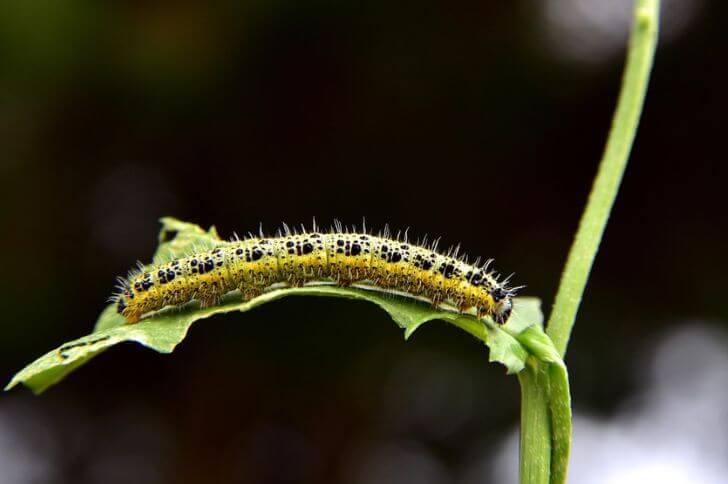
The Genista Broom Moth Caterpillar, with its vibrant green body and striking black head, is a fascinating specimen in the world of caterpillars. Found primarily in Mediterranean regions and parts of Africa, these caterpillars have adapted to feed on the leaves of various broom plant species.
What sets them apart is not just their unique appearance but also their behavior. Despite being small and seemingly harmless, the Genista Broom Moth Caterpillar possesses an ingenious defense mechanism that keeps predators at bay.
When threatened, these caterpillars employ a skillful act of deception by arching their bodies sideways and simultaneously extending brightly colored filaments from each side.
These filaments resemble flower petals or tiny twigs swaying in the wind, effectively camouflaging the caterpillar amidst the foliage it feeds on. This remarkable adaptation has led researchers to speculate that it might serve as a visual deterrent for potential predators who mistake it for something unpalatable or dangerous.
As we delve into the world of caterpillars, discovering how they adapt and evolve to survive becomes all the more intriguing. The Genista Broom Moth Caterpillar’s ability to deceive using its appearance illuminates nature’s intricate ways of granting safety in even the most seemingly ordinary creatures.
It serves as a reminder that there is always more than meets the eye when it comes to understanding Earth’s diverse inhabitants – a lesson worth exploring further as we unravel the mysteries that lie within our own backyard ecosystems.
6. Spicebush Swallowtail Caterpillar
The Spicebush Swallowtail caterpillar, known for its vibrant green coloration and distinctive black head, is a captivating creature that never fails to catch the eye. Found in eastern North America, this particular caterpillar species has some interesting behaviors and adaptations that set it apart from other insects.
One of the most fascinating aspects of the Spicebush Swallowtail caterpillar is its ability to mimic bird droppings as a defense mechanism. By resembling a pile of waste, the caterpillar disguises itself from potential predators such as birds or lizards.
Another intriguing characteristic of this caterpillar is its reliance on crucial host plants for survival. The Spicebush Swallowtail caterpillars feed primarily on spicebush trees (Lindera benzoin) or sassafras trees (Sassafras albidum), which contain toxic compounds called aristolochic acids.
Interestingly, these toxic substances don’t harm the caterpillars at all – instead, they accumulate them in their bodies and use them for their own defense against predators. This unique adaptation showcases nature’s exceptional ability to turn what could be harmful into something beneficial for certain species.
Conclusion
There are several types of green caterpillars with black heads that can be found in various habitats. These caterpillars are not only fascinating to observe but also play important roles in the ecosystem.
From the hornworm caterpillar’s destructive feeding habits to the cabbage butterfly caterpillar’s preference for cruciferous plants, each species has its own unique characteristics and behaviors.
By understanding these different types of green caterpillars, we can better appreciate the diversity of nature and work towards preserving their habitats. So next time you spot a green caterpillar with a black head, take a moment to marvel at its beauty and remember the vital role it plays in our environment.
source:
Wild Indigo Duskywing Caterpillar
Passionate animal photographer with an unwavering love for capturing the essence and beauty of our furry friends.
With over five years of experience in the field, I have developed a unique ability to connect with animals on a deeper level, allowing me to create stunning and captivating images that truly reflect their personality.
Let’s collaborate to capture unforgettable moments that celebrate the unique bond between humans and animals!

